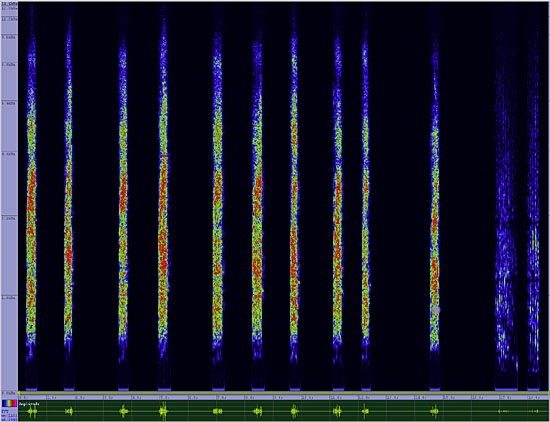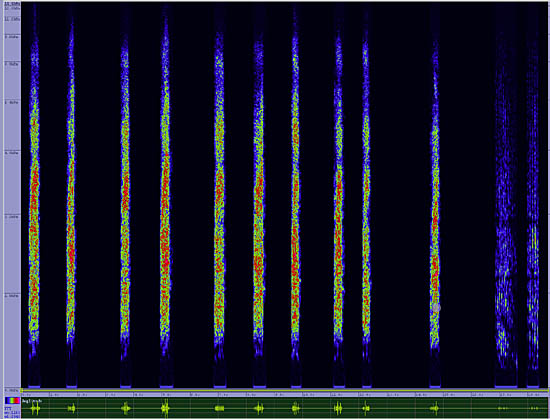Acorn Woodpecker
Melanerpes formicivorus

Tree Clinging

Length: 9 in. (23 cm )
This species is dependent on oaks and acorns for its survival. It stores acorns for the winter by jamming surplus acorns one by one into shallow holes pecked out in a tree, telephone pole or fence post. Up to 50,000 acorns have been counted on the trunk of a single \granary\ tree, but it also stores other nuts when they are available. The Acorn Woodpecker is an unusually noisy species and lives in colonies of up to 16 individuals that are made up of at least two breeding pairs and all their offspring from previous nestings. Commonly attracted to seed feeders and occasionally hummingbird feeders in pine-oak woodlands of foothills, it nests in holes made in trees and poles.
The four-digit banding code is ACWO.
Bibliographic details:
- Article: Acorn Woodpecker
- Author(s): Dr. Biology
- Publisher: Arizona State University School of Life Sciences Ask A Biologist
- Site name: ASU - Ask A Biologist
- Date published:
- Date accessed:
- Link: https://askabiologist.asu.edu/activities/bird/acorn-woodpecker
APA Style
Dr. Biology. (). Acorn Woodpecker. ASU - Ask A Biologist. Retrieved from https://askabiologist.asu.edu/activities/bird/acorn-woodpecker
Chicago Manual of Style
Dr. Biology. "Acorn Woodpecker". ASU - Ask A Biologist. . https://askabiologist.asu.edu/activities/bird/acorn-woodpecker
Dr. Biology. "Acorn Woodpecker". ASU - Ask A Biologist. . ASU - Ask A Biologist, Web. https://askabiologist.asu.edu/activities/bird/acorn-woodpecker
MLA 2017 Style
Be Part of
Ask A Biologist
By volunteering, or simply sending us feedback on the site. Scientists, teachers, writers, illustrators, and translators are all important to the program. If you are interested in helping with the website we have a Volunteers page to get the process started.






